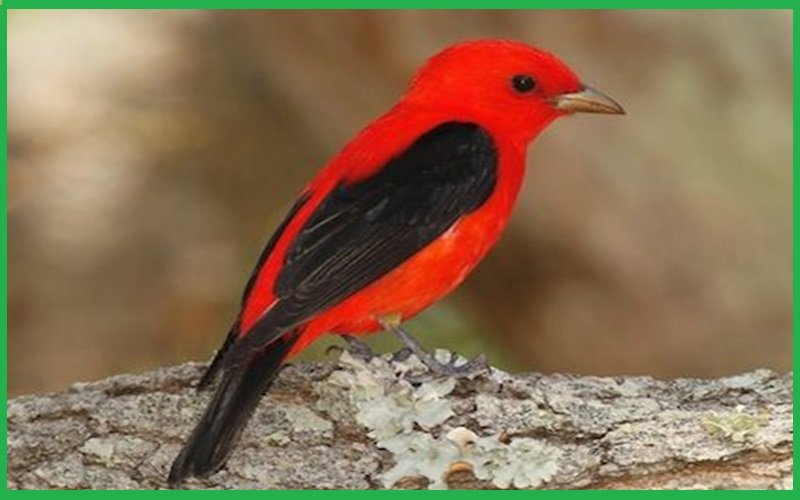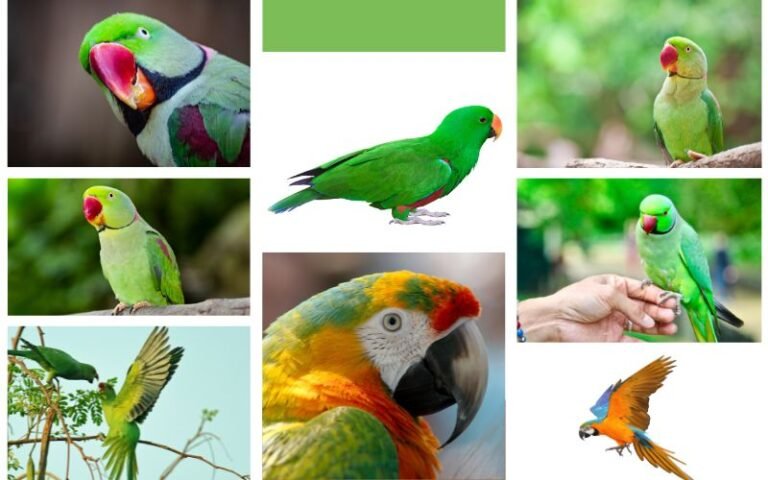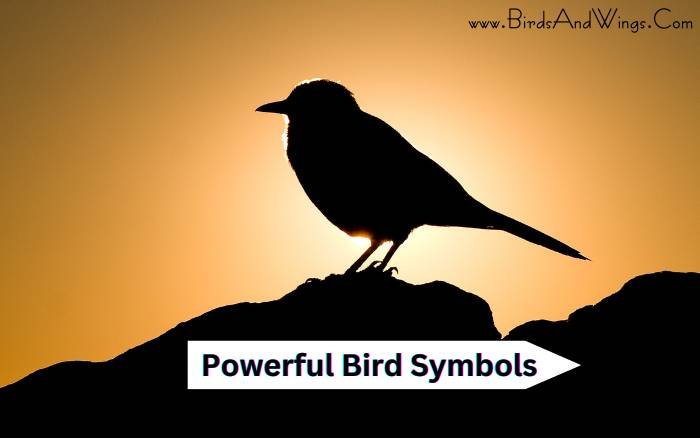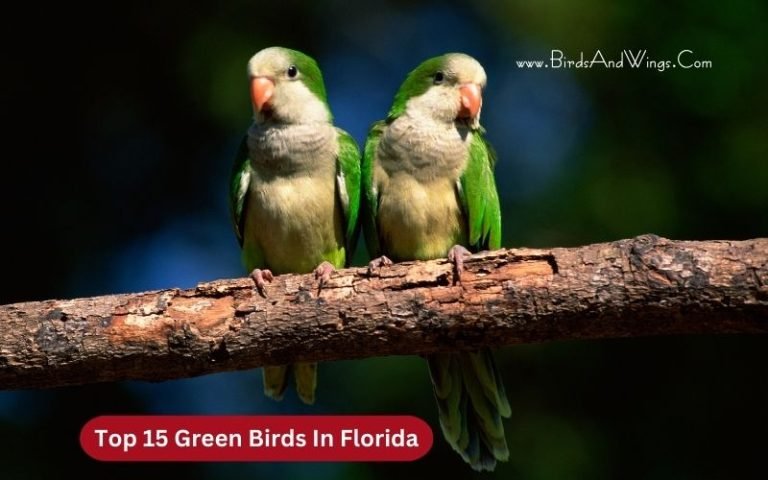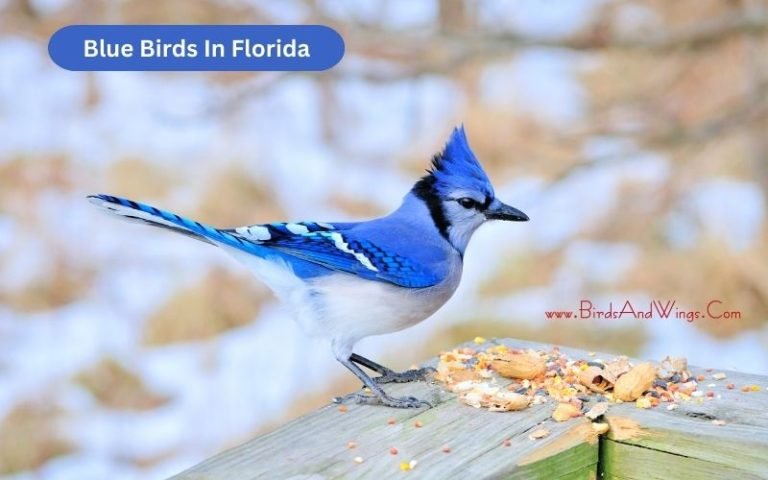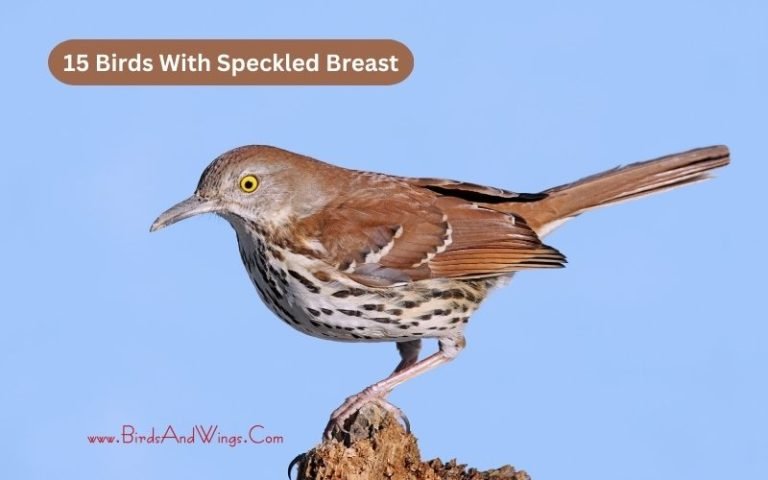15 Beautiful Red Birds in Wisconsin
Wisconsin is a midwestern U.S. state. Its coastlines are on two Great Lakes, Michigan and Superior, and its interior is filled with forests and farms.
This state is filled with numerous lakes, a crazy sports fan base, and friendly people addicted to cheese.
This Wisconsin state is also a great place to be called home because of its countless lakes, proper breeding sites, proper nesting sites with immense food sources, and providing avian species a secure and settled home.
Redbirds in Wisconsin are especially one of the largest spotted birds in this state. I will provide the top 15 red birds in Wisconsin by illustrating their other facts like scientific names, lifespan, native place, size, food, distribution, behavior, and so on.
So, let’s dive into the red bird world in Wisconsin.
15 Beautiful Red Birds in Wisconsin
Wisconsin is a state that is regarded as a safe, secure home for avian species because of its dense forests and countless lakes.
Redbirds are rare in other places, but this city is a treasure trove of redbirds. In this section, we will explore Wisconsin’s top 15 redbirds, their preferred habitats, distribution, and different seasonal behaviors that resemble their survival tactics.
1. Northern Cardinal

- Scientific name: Cardinalis cardinalis
- Lifespan: around 15 years
- Wingspan: 25–31 cm (9.8–12.2 in)
- Native to: Southeastern Canada, Eastern United States
- Size: around 21 to 23 cm
- Food or Diet: seeds, grains, fruits, snails, oats, grasshoppers, etc.
Northern cardinals are very common red birds that can be observed throughout the year in Wisconsin. They are also recognized as red birds, common cardinals, or red cardinals, which are subspecies of the Cardinal family.
Male Wisconsin birds’ whole body is covered with red plumage with a red crest on their head. Their face is black around the eyes and nose area with bright red beaks.
Female Wisconsin birds have a slightly reddish olive color in their body. These Wisconsin cardinals are local to the United States and include Florida, Canada, New Mexico, Texas, Guatemala, and Bermuda.
You can find their habitats if you visit open wooded areas, wetlands, parks, and brushy fields. You will also be amazed that these Wisconsin red cardinals have made their pairs for several years.
During courtship, they perform display dances and show bonding behavior. In these courtship rituals, the male brings food for the female and sometimes feeds their partner from beak to beak.
They build their nests with twigs, strips, grasses, or plant fibers. Female cardinals usually lay 3 to 4 eggs in the nests, which they incubate for 12 to 13 days. Little chicks use their vocals to attract their parents when they are hungry.
2. House Finch

- Scientific name: Haemorhous Mexacanus
- Lifespan: around 11 years
- Wingspan: 8 – 10 inches
- Native to: North America
- Size: 12 to 15 cm
- Food or Diet: seeds, buds, fruits, plants, etc.
House Finches are small red birds related to the Finch family in Wisconsin. Male Wisconsin finches have nut-brownish bodies with a red patch on their faces and chins.
Female Wisconsin finches have brownish bodies with white spots. These red birds are widely spotted in North America including New York, Mexico, the southwestern United States, and Canada.
Apart from their distribution, you can find their habitats in semi-open, urban, and suburban areas. These red Wisconsin birds build their nests in cavities in open buildings or other cup-shaped outdoor decorations.
You can also attract these birds to your backyard by hanging plants. Sometimes, they use a nest abandoned by other birds.
Female and male birds touch themselves with their bills during their courtship rituals. Sometimes, the male finch brings food for his mates and feeds them; even when female birds incubate, male birds feed them at that time.
Female birds build their nests about 1.8 to 2.7 meters above the ground. These Wisconsin red birds are also among the most annoying birds because they destroy orchards, fruits, and grain fields.
3. American Robin

- Scientific name: Turdus migratorius
- Lifespan: average 2 years
- Wingspan: 12 to 16 inches
- Native to: Europe, North America
- Size: 23-28 cm
- Food or Diet: insects: earthworms, beetles, grubs, caterpillars grasses, and fruits
American birds are average-sized red orangish birds that are highly seen in Wisconsin. These red birds breed mostly in North America including Alaska, Canada, Florida, and Mexico.
Like their native places, you can spot them in open lands, woodlands, urban areas, and farmlands. Their 40% food diets contain insects such as grasshoppers, ants, earthworms, beetles, and caterpillars.
Besides 60% of birds in the wild and captivity prefer fruits and berries. They form a flock and stay with their colonies.
These Wisconsin American robins generally become active during the day, but in winter, they gather in large flocks at night to roost in trees in scheduled swamps or dense forests.
You may also find them singing with other thrush birds. Their song duration mostly starts in late February or early March and lasts until the end of July or early August.
4. Scarlet Tanager

- Scientific name: Piranga olivacea
- Lifespan: around 10-12 years
- Wingspan: 25 to 30 cm (9.8 to 11.8 in)
- Native to: Eastern North America, South America
- Size: 16 to 19 cm (6.3 to 7.5 in)
- Food or Diet: mainly insects, wasps, bees, ants, snails, worms and some fruits
Scarlet Tanager birds are similar red birds of tanager species and are associated with the Cardinalidae family in Wisconsin.
Adult male Wisconsin have deep red plumage and black on the wings which almost resemble northern cardinals and summer tanagers. Female tanagers have olive-yellowish plumage with brownish wings.
They might inhabit deciduous forests, oak trees, parks, suburban areas, and cemeteries. They usually arrive at their breeding spot between May and early June. Later, females in Wisconsin built nests and laid four light blue eggs there.
After laying the eggs, female birds incubate the eggs for about 11 to 14 days. The young birds leave their nest by 9 to 12 days and can fly fully after being hatched.
Sometimes, they fly around to catch their prey, and they are even spotted on the forest grounds or floor in order to search for food.
5. Common Redpoll

- Scientific name: Acanthis flammea
- Lifespan: around 2 to 3 years
- Wingspan: 19 to 22 cm
- Native to: Europe, Asia, North America, Greenland
- Size: 11 -14 cm
- Food or Diet: The main food is seeds and some insects
The common redpoll birds are small birds with red birds in Wisconsin. Their body is covered with red, brown, and white plumage. Males in Wisconsin have red patches over their forehead and chest area.
Their distribution region covers Europe, Asia, northern North America, Greenland, and Iceland. Later, in late autumn, they migrate slightly to southeastern parts and northward again in March and April.
They prefer mostly normal forests of pines, spruces, and larches. So, if you want to see these red birds, you can visit those areas. Their prime food is seeds, but they also eat a few insects.
They lay three to four eggs in the nest, and after 11 days, the young fly away.
6. Pine Grosbeak

- Scientific name: Pinicola enucleator
- Lifespan: around 9.8 years.
- Wingspan: 13 inches
- Native to: Northern Eurasia, North America, Canada the United States
- Size: 20 to 25.5 cm
- Food or diet: seeds, buds, berries and insects
Pine grosbeak is another red bird in Wisconsin city. They are a similar species of the Finch family related to the Fringillidae group.
Regarding their physical appearances, these Wisconsin pine grosbeak birds have red and black plumage over their body with a redhead, face, back, and rump.
Their wings and tails are black, with white wing bars and large beaks. These birds are widely spotted in Alaska, the United States, and Canada. You can easily find these red birds in wooded areas, coniferous forests, and western mountains being inhabitants.
You can also find these birds in Europe and North America during their breeding season, including coniferous forests. Female birds make horizontal nests on a brochure or in a fork of a conifer tree.
If they find a deficiency in their food sources, they might migrate to the South to search for food.
7. Purple Finch

- Scientific name: Haemorhous purpureus
- Lifespan: around 7 years
- Wingspan: 25.4 cm
- Native to: North America
- Size: 12 -16 cm
- Food or Diet: ground vegetation, fruits, seeds, berries and insects
Purple Finch birds are another small red bird in Wisconsin. Talking about their appearances, these birds have red and white plumage over their body.
The red color is more prominent around their forehead and head. Their eyes are also covered with white lines. These Wisconsin red birds are also native to North America, including Canada, the United States, and the Pacific coasts.
Some birds migrate from northern Canada to the southern United States, and others permanently stay in their regions for all seasons.
They build their nests on a tree’s fork or any tree’s horizontal branch. You might find them eating food from the ground, mostly eating what they find on the ground.
However, their prime food is seeds, along with berries, sunflowers, millet, and insects. These species try to avoid human interaction and contact.
8. Red Bellied Woodpecker

- Scientific name: Melanerpes carolinus
- Lifespan: around 12 years
- Wingspan: 15 to 18 inches
- Native to: Eastern United States including Florida and Canada
- Size: 22.85 to 26.7 cm
- Food or Diet: beetles, centipedes, spiders, fruits, and other insects
The Red-Bellied woodpeckers are medium-sized, similar subspecies to the woodpecker family.
They are mostly familiar with the eastern United States, including South Florida, North Canada, and Wisconsin. You might confuse them with red-headed woodpeckers, but their red patch on the head, zebra patterns, and black and white stripes in the wings define their identity.
These Wisconsin red birds are noisy and make lots of chur-chur-chur sounds, which show they are trying to call other groups or pairs to communicate.
Sometimes, they even tap on hollow trees or aluminum roofs to make a sound. These red woodpeckers can catch their prey or other insects in flight positions.
These red-bellied woodpeckers build their nests from dead or dry wood. Male Wisconsin birds always get their mates’ permission before mutually taping their nesting holes.
9. Red-headed Woodpecker

- Scientific name: Melanerpes erythrocephalus
- Lifespan: maximum longevity of 9.9 years
- Wingspans: 16.7 inches
- Native to: North America
- Size: 19 to 25 cm
- Food or Diet: seeds, nuts, berries, fruits, insects, etc.
Red-headed woodpeckers are also medium-sized red woodpeckers in Wisconsin. These Wisconsin birds have black backs and tails with white breasts and bellies.
They have bright red heads and black beaks. If you travel to North America, including southern Canada and the East Central United States, you have a high chance of encountering these birds.
You will be surprised to learn that they stuff food into their tree holes or cavities, which helps them to survive throughout the years.
These woodpeckers store their food in tree cavities, a habit found only in two to three species of woodpeckers, including this red-headed woodpecker.
After building their nests, these woodpeckers become territorial and try to protect their territory. Sometimes, they also destroy other birds’ eggs and territories.
Female red birds choose their nesting cavity, and sometimes, both males and females drill trees to make their own nesting cavities. However, most of the drilling is done by the male woodpeckers.
Female woodpecker birds lay 4 to 7 white eggs and incubate them for 2 weeks, usually, at around 27 to 31 days after the young fledge from their nests.
10. Rose Breasted Grosbeak

- Scientific name: Pheucticus ludovicianus
- Lifespan: around 7.3 years in the wild; 24 years in captivity
- Wingspan : 11-13 inches
- Native to: Central America
- Size: 18 to 22 cm
- Food or Diet: insects, seeds, berries, nectar, wheat, fruits, etc.
Rose-breasted grosbeaks are small to medium-sized seed-eating birds in Wisconsin. You can easily spot these birds by their black heads, tails, and backs, as well as the little red on their breasts.
Female grosbeaks have gray-brown lowerparts with white spots on their wings and backs. They also have white lines beside their eyes. These grosbeak birds are common in Central America, the Caribbean, Peru, Venezuela, Colombia, and Costa Rica.
However, you can also detect them in open places and wooded areas. Male Wisconsin birds usually reach their breeding spot early before the female birds.
After breeding seasons, both male and female birds select their nesting sites and build their nests on tree branches between early May and early June.
These red birds build their nests about 6 to 16.7 meters above the ground. Female grosbeak birds lay 1 to 5 eggs normally 3 to 4 eggs.
Their eggs are greenish to purple-brownish. These species can live a maximum of 7.3 years in the wild, and in captivity, their life cycle lasts around 24 years.
11. Summer Tanager

- Scientific name: Piranga rubra
- Lifespan: around 5 years
- Wingspan: 28 to 30 cm
- Native to: Southern states, Mexico, Central America, and South America
- Size: 17 cm (6.7 in)
- Food or Diet: prime food insects, beetles, cicadas, caterpillars, grasshoppers, bugs, flies and spiders
Summer tanager birds are also classified as red birds in Wisconsin and are related to the Cardinalidae family. Adult male tanagers have rose-red plumage with dark bills.
Female Wisconsin birds have orangish underneath and olive upper parts with olive-brown wings and tails. Southern United States, Mexico, Central America, and Southern America are the distributed regions where you can find these red Wisconsin birds.
However, do not travel to Western European countries as there are very rare birds to spot there. They tend to choose wooded areas, mostly oaks for their habitats. If you go in winter, try to find places like lowlands, forest edges, and scattered trees.
They sometimes forage in high trees to catch their food; and even fly out to catch insects. These summer tanagers birds make pi-tuk or pik-i-tuk vocals to communicate with their mates.
12. Pyrrhuloxia

- Scientific name: Cardinalis sinuatus
- Lifespan: up to 9 years
- Wingspan: 10-12 inches
- Native to: North America
- Size: 8.3 in (21 cm)
- Food or Diet: seeds, fruits, and insects
Pyrrhuloxia is a medium-sized red cardinal bird in Wisconsin. These birds resemble northern and Vermilion cardinals.
The male Wisconsin Pyrrhuloxia is brownish gray with a red crest on its head. Its face is also red, and its beak is orange.
These birds are found in the North American region, including the American Southwest, Northern Mexico, the United States of Arizona, and Texas.
Their preferable habitats are desert scrub, mesquite thickets, and woodland areas, where you can easily spot these Wisconsin redbirds. The breeding season for this red bird starts in mid-March and ends in mid-August.
During their breeding seasons, male red Wisconsin birds establish their territories and defend them by chasing away intruders. Furthermore, these red birds of Wisconsin also sing a song to divert the concentration of the predators or intruders.
Females build their nests, which are bowl or cup-shaped and generally made of grass, trees, leaves, bark, plants, and twigs. Later, female birds lay 2 to 4 eggs there and incubate them for about 2 weeks.
13. Painted Bunting

- Scientific name: Passerina ciris
- Lifespan: around 12 years
- Wingspan: 21 to 22 cm
- Native to: North America
- Size: 12 to 14 cm
- Food or Diet: seeds, grasses, insects, grasshoppers, caterpillars, spider webs, snails etc.
Painted Buntings are vibrantly plumaged birds with red breasts and red lower bodies. This red coloration puts them into the red bird category of Wisconsin state.
Besides their red lower parts, They have dark blue colored heads and black beaks. Their wings and backs are green and brownish-black.
These Wisconsin red bunting birds are generally North American birds, including those in the New Mexico, Georgia, South Florida, Cuba, Bahamas, Oklahoma, and Arizona regions.
During breeding seasons, you can find these red birds in southern Arizona, New Mexico, Texas, and Oklahoma. But in winter, they are seen in South Florida, Cuba, the Bahamas, and the coasts of Mexico and Central America.
If you want to see these birds personally, you can visit thick shrubbery, woodlands, brushy areas, dense gardens, dense vegetation, or savanna areas in search of their habitats.
These red Wisconsin birds build their nest usually 3 to 6 feet, a maximum of 12 feet above the ground level. They are mostly known as shy nature birds and tend to hide themselves from human eyes.
It’s very hard to observe these birds. Because of their shy behavior, they mostly avoid human contact. These Wisconsin red birds also molt themselves twice a year.
Usually, birds molt their sheds before they start their migration journey. However, some birds molt their feathers during their migration period.
Even though these red birds are shy, they tend to show agonistic behavior towards other birds and could even kill them with such behavior.
14. Red Crossbill

- Scientific name: Loxia curvirostra
- Lifespan: around 8 to 10 years
- Wingspan: 27 to 29 cm
- Native to: North America and Eurasia
- Size: around 20 cm
- Food or Diet: seeds of coniferous
Red Crossbill birds are also one of the passerine red birds which are related to the Finch family. Although they are not fully red, they partially have orangish red with brown plumage over their body.
Their crisscross-shaped bill is associated with their unique name. These Wisconsin red birds are mostly native to the North American and Eurasia continents.
However, you can find these birds in conifer, larch, fir, pine, and spruce trees. These Wisconsin birds usually build their nests in late summer, mostly between June and September, when conifer seeds can mature.
They also secure their areas with a suitable corn crop and build their nest around it. They form a flock or large groups and remain with those groups during their breeding seasons.
However, you might also spot these red birds to form a group with other species and subspecies of crossbill as well.
Conclusion
To summarize, Wisconsin City is a welcoming place for our red species. These red birds find this city suitable for appropriate breeding seasons, nesting sites, and other sources with a balanced ecological system, which helps them grow their individual species in healthy and rich environments.
And guess what? Wisconsin state, Florida, and New York City are heavenly places for our red birds to sustain themselves in nature with all their survival and adaptability characteristics.

